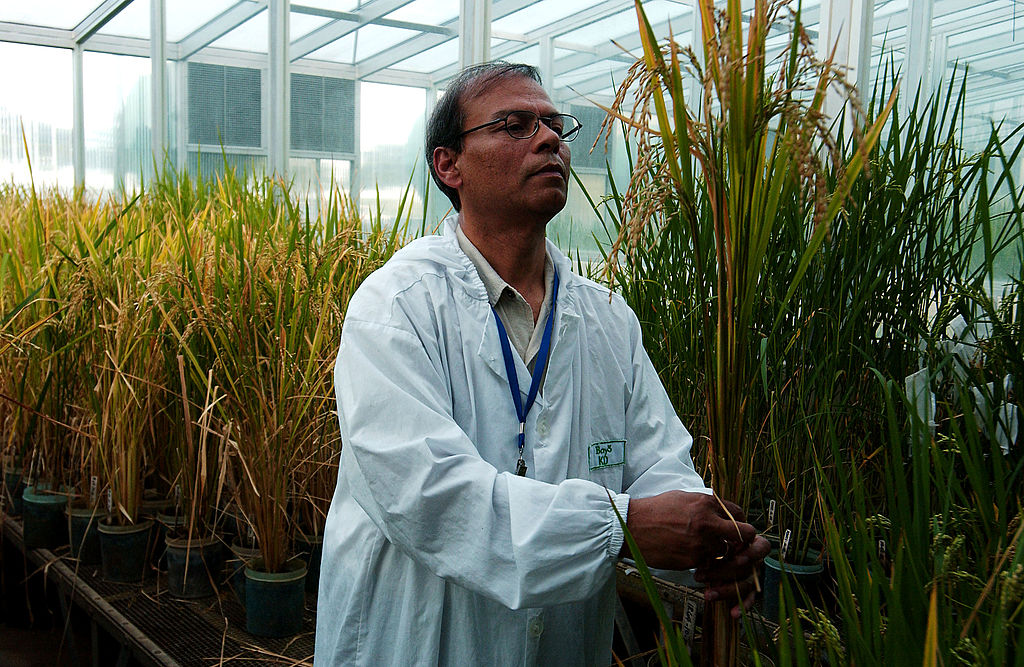First, a word of warning. If you donate money to Greenpeace, you might think you’re helping save the whales or the rainforests. But in reality, you may be complicit in a crime against humanity. Last week, Greenpeace Southeast Asia and several other NGOs managed to stop the cultivation and use of vitamin A-enhanced rice in the Philippines, after the country’s court of appeal ruled in their favour.
Greenpeace’s actions in blocking Golden Rice do not just tarnish its own brand, but bring the whole environmental movement into disrepute
In doing so, Greenpeace have blocked a multi-year, international, publicly-funded effort to save the lives and the eyesight of millions of children in some of the world’s poorest countries.
Vitamin A deficiency is a serious health problem in developing countries in Asia and Africa, causing an estimated 250,000 to 500,000 cases of blindness in young children every year. The World Health Organisation estimates that half of these children die within 12 months of losing their sight. Malnutrition rates vary. In the Philippines, 17 per cent of children under six are Vitamin A deficient, while in Bangladesh the rate is about 20 per cent.
Vitamin A deficiency in Asia is high because poorer people there tend to be dependent on white rice, which lacks micronutrients, but has enough calories to get a family through the day. To address this directly, a genetically engineered rice called ‘Golden Rice’ was invented in the 2000s. Golden Rice has been given a gene which produces beta-carotene – the precursor of vitamin A – which also gives the grains a gentle golden hue. If Golden Rice was included in diets across Asia and Africa, thousands of lives would be saved.
But while the first trials of Golden Rice took place in 2004, its rollout in Asia has been beset with delays. Some of this was because of technical issues – now resolved – with rice breeding. But a bigger problem has been ongoing protests by anti-GMO activist groups. At one point in 2013 a mob of activists – posing as farmers, but in reality largely urban activists who had been bussed in for the occasion – broke down a fence and invaded a Golden Rice trial site in the Philippines, trampling on and trashing the young rice plants growing there.
Activists against Golden Rice are ignoring decades of scientific peer-reviewed research which shows conclusively that genetically-engineered crops and foods are safe. Still, they continue to spread myths and misinformation, claiming that GM crops are a health risk and are being pushed by ‘transnational corporations’.
In a triumphal press release issued after the Golden Rice decision, Greenpeace falsely claimed once again that ‘GM crops have never been proven safe’, contradicting this worldwide scientific consensus.
The judges in the Philippines were clearly bamboozled by this barrage of misinformation, and their ruling is an undeniable win for Greenpeace and its allies. The court blocked all use of Golden Rice in the Philippines – meaning farmers currently growing it across the country will have to destroy their crops. And, the court’s prohibition applies as well to Bt eggplant, another GMO crop which has a pest resistance gene intended to help reduce the need for toxic insecticides. (Yes, in effect this means Greenpeace is pro-pesticide too.) It also forbids any use or even importation of genetically modified crops for the foreseeable future.
This is a devastating blow to the scientific community in the Philippines, and the humanitarian groups who were hoping Golden Rice could be used to help save the lives of young children across Asia and Africa. It will hamper the progress of Golden Rice everywhere, including in Bangladesh where it is still awaiting government approval, again after years of unnecessary delay. I can’t make a precise estimate, but assuming the chilling effect extends to similar efforts elsewhere in the developing world, the potential effect could be in the order of 100,000 avoidable child deaths per year.
This is almost a trivial point by comparison, but as a lifelong environmentalist it is one that is important to me. Greenpeace’s actions in blocking Golden Rice do not just tarnish its own brand, but bring the whole environmental movement into disrepute. Those who oppose what we advocate on everything from climate change to biodiversity can look at what Greenpeace has done and tar the entire green movement with being anti-scientific and even anti-human. The world will be the worse for it.
Back in 2013, following the vandalism carried out at a Golden Rice test site, I wrote that unlike some, I was not accusing Greenpeace and its ideological allies of committing a crime against humanity. Now, I’m done holding back. Greenpeace, j’accuse.
This article is free to read
To unlock more articles, subscribe to get 3 months of unlimited access for just $5







Comments
Join the debate for just £1 a month
Be part of the conversation with other Spectator readers by getting your first three months for £3.
UNLOCK ACCESS Just £1 a monthAlready a subscriber? Log in